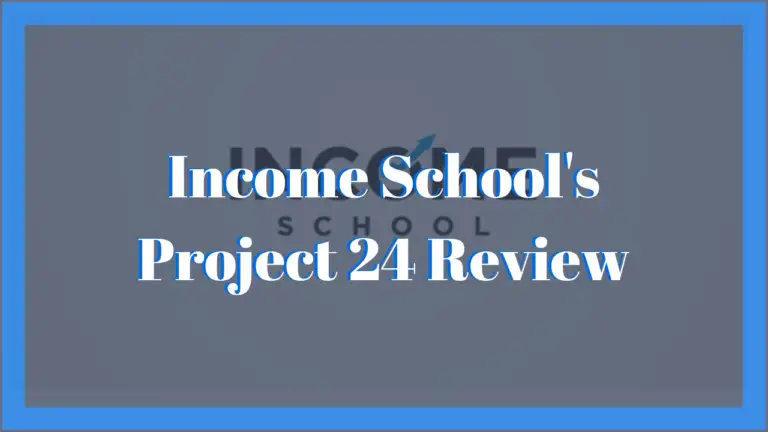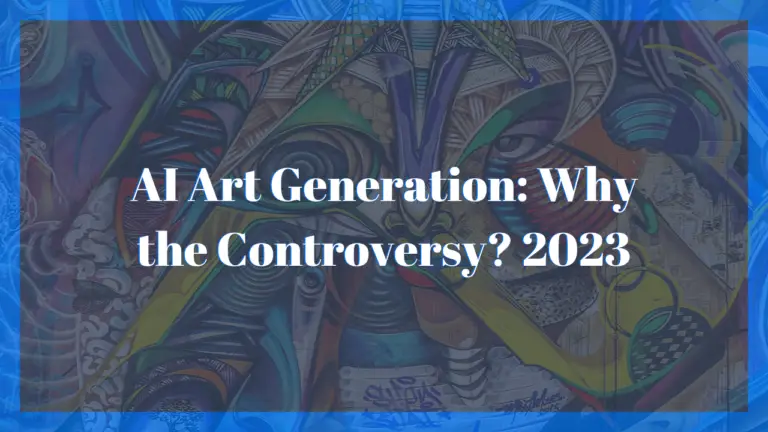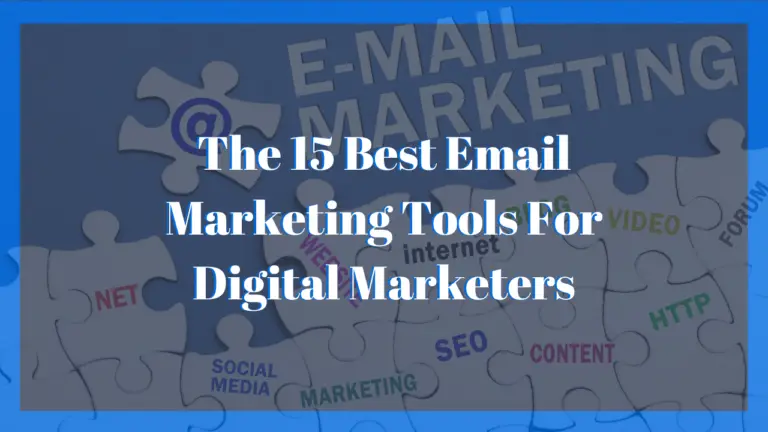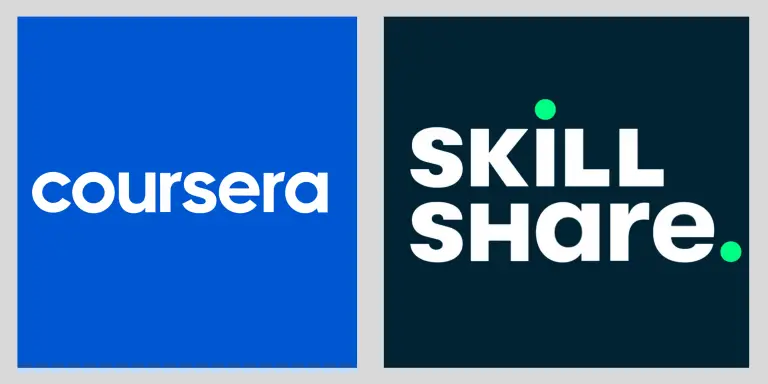Top 2023 Software Trends: A Comprehensive Review
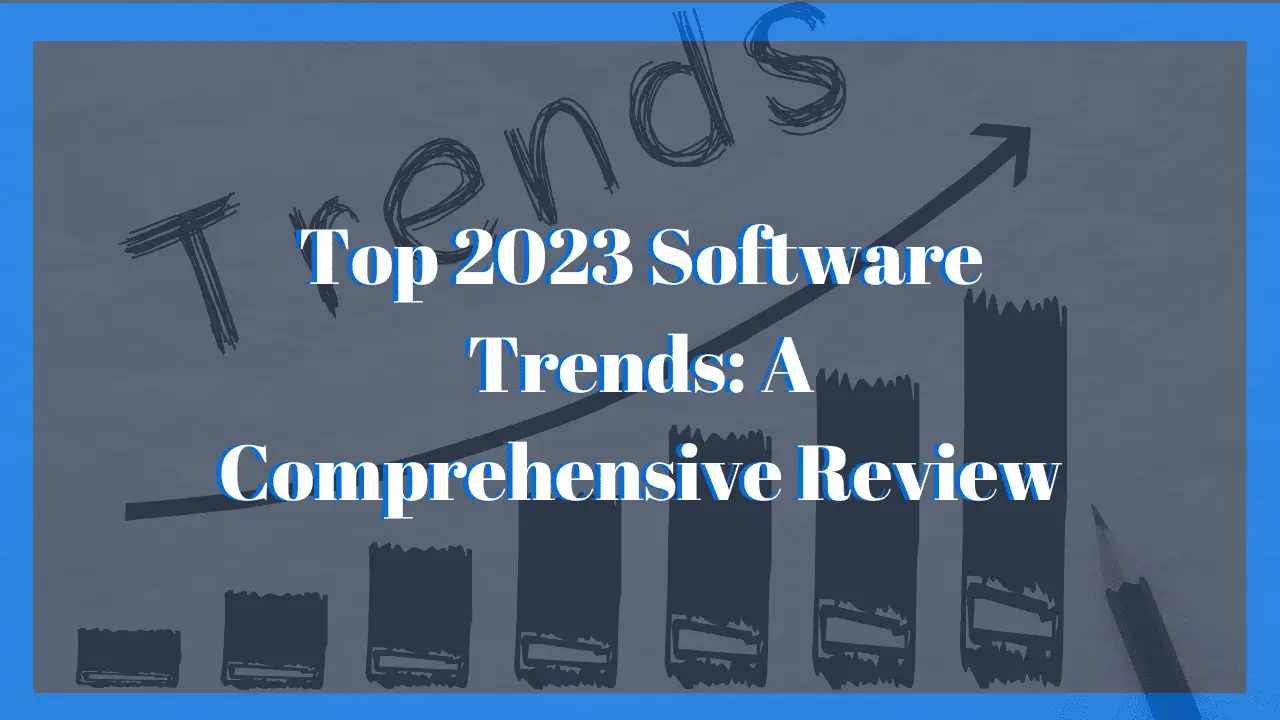
Software is the heart of the modern world, powering everything from smartphones and cars to healthcare and financial systems. In this ever-evolving landscape, staying ahead of the curve is crucial. To help you navigate the future, we delve into the top software trends for 2023, providing a comprehensive review for businesses and individuals alike.
1. Artificial Intelligence and Machine Learning (AI/ML):
In the dynamic landscape of 2023, Artificial Intelligence (AI) and Machine Learning (ML) stand as transformative forces, reshaping the very fabric of software across diverse industries. These technologies seamlessly integrate into various sectors, offering unparalleled capabilities that redefine user experiences and operational efficiency.
Unlocking Possibilities:
AI and ML empower software to evolve, adapt, and comprehend new scenarios, unleashing a wave of innovation. Their influence spans far and wide, infiltrating every corner of the digital realm.
Real-world Impact:
Consider the tangible applications of ML algorithms, each contributing to a more streamlined and personalized user experience:
Financial Vigilance:
Fraud Detection: ML algorithms tirelessly analyze financial transactions, swiftly identifying anomalies and ensuring the integrity of economic systems.
Retail Revolution:
Customer Recommendations: AI-driven recommendation engines in retail cater to individual preferences, offering customers personalized suggestions that enhance their shopping journeys.
Healthcare Harmony:
Personalized Health Recommendations: ML algorithms personalize patient health recommendations in healthcare, ensuring tailored insights for improved well-being.
Benefits:
The benefits of AI and ML extend far beyond their immediate applications. At their core, these technologies usher in a new era characterized by:
Automation: Mundane and repetitive tasks are seamlessly automated, allowing human resources to focus on strategic and creative endeavors.
Personalization: Tailored experiences become the norm, whether it’s in retail, healthcare, or other sectors, fostering a deeper connection between users and software.
Predictive Analytics: Anticipating future trends and needs becomes more accurate, empowering businesses to make informed decisions.
Improved Decision-Making: From fraud prevention to medical diagnoses, the ability of AI and ML to analyze vast datasets results in more informed and effective decision-making processes.
Examples in Action:
Witness the tangible manifestations of AI and ML in everyday scenarios:
Chatbots and Virtual Assistants: Enhancing customer service and engagement with intelligent, automated conversational interfaces.
Recommendation Engines: Guiding users through personalized content, products, or services based on their preferences.
Fraud Detection Systems: Safeguarding financial transactions by swiftly identifying and mitigating potential threats.
Medical Diagnosis Tools: Assisting healthcare professionals in accurate and timely diagnoses, ultimately improving patient outcomes.
In 2023, AI and ML aren’t just trends; they are catalysts propelling the software industry toward unprecedented heights, enriching our digital experiences, and shaping the future of technology.
2. Cloud Computing:
In the ever-evolving landscape of technology, Cloud Computing has emerged as the go-to solution for software deployment, offering a paradigm shift in how businesses and individuals approach their digital infrastructure. Its scalability, flexibility, and cost-effectiveness have positioned it as the cornerstone for organizations of all sizes.
Embracing the Cloud:
Cloud Computing transcends traditional boundaries, providing advantages that shape how we interact with software and data.
Benefits:
Scalability:
On-Demand Resources: Organizations can effortlessly scale up or down based on their computing needs, ensuring optimal resource utilization.
Flexibility:
Adaptable Infrastructure: The flexibility of cloud services allows users to tailor their digital environment, accommodating diverse workloads and changing requirements.
Cost-Efficiency:
Pay-as-You-Go Model: Cloud services operate on a cost-effective pay-as-you-go model, eliminating the need for upfront investments in extensive hardware.
Accessibility:
Anytime, Anywhere Access: Cloud services enable users to access their data and applications from any location with internet connectivity, fostering collaboration and remote work.
Disaster Recovery:
Data Resilience: Cloud platforms offer robust disaster recovery capabilities, ensuring data integrity and business continuity in the face of unforeseen events.
Examples in Action:
Cloud Computing is not just a trend; it’s a revolution. Here are examples of prominent cloud service providers:
-
A pioneer in cloud services, AWS offers a comprehensive suite of computing power, storage, and databases, empowering businesses to scale and innovate.
-
Microsoft’s cloud platform provides a wide array of services, from analytics to computing, enabling organizations to build, deploy, and manage applications easily.
-
Google’s cloud services deliver a powerful and flexible infrastructure, including ML and data analytics tools, fostering innovation and efficiency.
Salesforce:
Renowned for its cloud-based customer relationship management (CRM) platform, Salesforce exemplifies how cloud solutions enhance business processes and customer interactions.
In 2023, the cloud is not just overhead; it’s the foundation upon which digital possibilities are built. As organizations continue to leverage its scalability, flexibility, and cost-efficiency, Cloud Computing remains an indispensable force propelling us into a future where innovation knows no bounds.
Certainly! Let’s format the excerpt on Low-Code Development Platforms to make it reader-friendly:
3. Low-Code Development Platforms:
In the era of digital empowerment, Low-Code Development Platforms such as Appian, Mendix, and OutSystems are catalyzing a paradigm shift in software development. These platforms democratize the process, enabling individuals with limited coding experience to actively participate in and contribute to creating custom applications. This democratization not only streamlines processes but also sparks innovation across diverse industries.
Empowering Creativity:
Low-Code Development Platforms redefine the landscape of software creation, fostering a more inclusive and collaborative approach to application development.
Benefits:
Democratizes Software Development:
Breaking Barriers: Platforms like Appian, Mendix, and OutSystems break down the traditional barriers to software development, allowing individuals with various backgrounds to engage in the process actively.
Boosts Citizen Developer Participation:
From Users to Creators: Citizen developers, individuals with limited coding experience, are empowered to contribute actively to software development projects, leveraging intuitive interfaces and pre-built components.
Accelerates App Development:
Rapid Prototyping: The intuitive nature of low-code platforms facilitates rapid prototyping, accelerating the development lifecycle and reducing time-to-market for applications.
Reduces Costs:
Efficient Resource Utilization: By enabling individuals with diverse skill sets to contribute, low-code platforms optimize resource utilization, reducing the overall costs associated with software development.
Examples in Action:
Low-Code Development Platforms are not merely tools but catalysts for change, opening the doors of software development to a broader audience. Here are a few examples:
-
Appian’s low-code automation platform empowers organizations to build apps and workflows quickly, driving business innovation and efficiency.
-
Mendix facilitates collaborative app development with a visual approach, allowing professional and citizen developers to contribute seamlessly.
-
OutSystems empowers organizations to develop and deploy applications quickly, focusing on scalability and flexibility.
The Rise of the Citizen Developer:
Low-code and No-code Development represent a paradigm shift, placing the power of application creation into the hands of those who understand the business needs best—its users. This newfound agility in development enhances efficiency and sparks innovation across industries.
In 2023, the era of citizen developers is in full swing, and Low-code and No-code platforms are the catalysts driving this revolution. As these tools continue to evolve, the possibilities for rapid, efficient, and inclusive application development are limitless.
4. Hyperautomation:
In the age of relentless innovation, Hyperautomation emerges as a transformative force, harnessing the power of Artificial Intelligence (AI), Machine Learning (ML), and a spectrum of cutting-edge technologies to automate a breadth of organizational tasks previously thought unimaginable. This strategic integration enables businesses to streamline operations, cut costs, and liberate human resources for more strategic and value-driven activities.
The Symphony of Automation:
Hyperautomation orchestrates a symphony of technologies, creating a harmonious blend far beyond traditional automation boundaries.
Benefits:
Increased Efficiency:
Optimized Workflows: Hyperautomation fine-tunes organizational workflows, eliminating bottlenecks and enhancing overall operational efficiency.
Reduced Costs:
Resource Optimization: Businesses can significantly reduce operational costs associated with manual labor and repetitive processes by automating tasks.
Improved Accuracy:
Precision Automation: AI and ML technologies contribute to heightened accuracy, minimize errors, and ensure consistent results.
Enhanced Scalability:
Adaptable Growth: Hyperautomation provides a scalable framework, allowing organizations to adapt to changing workloads and demands effortlessly.
Better Decision-Making:
Data-Driven Insights: The integration of AI facilitates data-driven decision-making, providing valuable insights derived from automated processes.
Examples in Action:
Witness the impact of Hyperautomation through pioneering examples:
Robotic Process Automation (RPA):
RPA automates rule-based tasks, freeing human resources for more cognitive and strategic activities.
- Intelligent Document Processing (IDP):
- IDP employs AI to extract, interpret, and organize data from documents, expediting document-centric processes.
Automated Testing:
Automated testing frameworks leverage Hyperautomation to enhance software quality, efficiency, and speed in the testing phase.
In 2023, Hyperautomation isn’t merely a trend; it’s a visionary approach to reshaping the landscape of organizational operations. As businesses embrace the myriad benefits—increased efficiency, reduced costs, improved accuracy, enhanced scalability, and informed decision-making—they pave the way for a future where automation is not just a tool but a strategic imperative
5. Internet of Things (IoT) and Edge Computing:
In the era of hyper-connectivity, the proliferation of Internet of Things (IoT) devices has presented a challenge: how to process and analyze the vast amounts of data generated efficiently. Enter Edge Computing, a revolutionary approach that addresses this challenge by bringing computing power closer to the data source. This facilitates real-time insights and lays the foundation for improved decision-making across industries.
Navigating the Connected Landscape:
As the number of connected devices continues to soar, the synergy between IoT and Edge Computing emerges as a pivotal solution, reshaping the digital landscape.
Benefits:
Real-time Data Processing and Analysis:
Instantaneous Insights: Edge Computing enables data processing at the source, providing real-time insights critical for responsive decision-making.
Improved Performance:
Enhanced Efficiency: Processing data closer to the device reduces latency, improving overall system performance.
Reduced Latency:
Swift Responsiveness: By minimizing the time it takes for data to travel, Edge Computing significantly reduces latency, crucial for applications requiring instant responses.
Better Data Security:
Localized Protection: Edge Computing enhances data security by processing sensitive information closer to its origin, minimizing the risk of unauthorized access during transmission.
Examples in Action:
Explore the tangible impact of IoT and Edge Computing through diverse examples:
Smart Cities:
IoT sensors embedded in urban infrastructure and Edge Computing enable real-time monitoring and efficient management of city services.
Connected Manufacturing:
Edge Computing revolutionizes manufacturing processes by providing instant data analysis and optimizing production efficiency.
Healthcare Monitoring Systems:
IoT devices paired with Edge Computing allow continuous patient monitoring in healthcare, facilitating timely interventions and personalized care.
Smart Grids:
Edge Computing is pivotal in intelligent grids, ensuring efficient energy distribution and management through real-time data analytics.
In 2023, IoT and Edge Computing represent more than just technological trends; they symbolize the evolution toward a seamlessly connected future. As businesses and industries leverage real-time processing, improved performance, reduced latency, and fortified data security, the synergy between IoT and Edge Computing becomes a cornerstone for innovation and progress.
6. Cybersecurity:
In an era dominated by digital technologies, the imperative of robust cybersecurity measures has never been more pronounced. As the digital landscape evolves, emerging trends such as zero-trust security and ransomware protection are critical in safeguarding sensitive data and ensuring uninterrupted business continuity.
Fortifying the Digital Fortress:
Cybersecurity is the digital realm’s guardian, defending against evolving threats and ensuring data integrity.
Key Trends and Measures:
Zero-Trust Security:
A Paradigm Shift: Zero-trust security assumes no inherent trust, requiring verification from anyone trying to access resources, bolstering defenses against unauthorized access.
Ransomware Protection:
Guarding Against Threats: With the rise of ransomware attacks, robust protection mechanisms are vital to prevent unauthorized access and extortion attempts.
Benefits:
Improved Data Security:
Safeguarding Assets: Robust cybersecurity measures enhance the security of sensitive data, protecting organizations from unauthorized access and data breaches.
Reduced Risk of Cyberattacks:
Proactive Defense: Implementing advanced cybersecurity strategies reduces the risk of cyberattacks, ensuring resilience against evolving threats.
Compliance with Regulations:
Meeting Standards: Adherence to cybersecurity measures ensures compliance with regulations, safeguarding organizations from legal repercussions.
Enhanced Brand Reputation:
Trustworthiness: A strong cybersecurity posture not only protects data but also enhances brand reputation by demonstrating a commitment to security and customer trust.
Practical Tips for Cyber Hygiene:
Empower your organization with these actionable cybersecurity tips:
Implement Multi-Factor Authentication:
Strengthen access controls by requiring multiple forms of verification, adding an extra layer of security.
Regularly Update Software and Systems:
Stay ahead of vulnerabilities by ensuring that software and systems are regularly updated with the latest security patches.
Use Strong Passwords:
Encourage using complex passwords to fortify access points and mitigate the risk of unauthorized entry.
Conduct Security Awareness Training:
Equip employees with the knowledge to recognize and respond to potential security threats through regular training sessions.
In 2023, cybersecurity is not just a necessity; it’s a strategic imperative. As organizations fortify their digital defenses with zero-trust security, ransomware protection, and adherence to best practices, they pave the way for a secure and resilient digital future.
7. Open Source Software:
In the dynamic realm of software development, the ascent of Open Source Software marks a transformative shift, gaining rapid popularity for its unparalleled flexibility, cost-effectiveness, and collaboration. Platforms such as Linux, Apache, and WordPress are at the forefront, reshaping the software landscape by offering robust and customizable solutions tailored to diverse needs.
Unlocking the Power of Collaboration:
Open Source Software thrives on collaboration, harnessing the collective expertise of a global community to create and refine software solutions.
Benefits:
Collaboration:
Global Innovation Hub: Open Source Software fosters collaboration, allowing developers worldwide to contribute, enhance, and refine software for the benefit of the community.
Flexibility:
Tailored Solutions: The open nature of the source code empowers developers to customize software according to specific needs, ensuring a tailored fit for diverse applications.
Cost-Effectiveness:
Accessible to All: The cost-effectiveness of open-source solutions democratizes access to powerful software, eliminating licensing fees and reducing financial barriers.
Transparency:
Visibility into Codebase: Transparency is a hallmark of open source, providing users with visibility into the codebase, fostering trust, and facilitating collaborative scrutiny for security and quality assurance.
Security:
Community Vigilance: The collective nature of open-source communities contributes to robust security, with community members actively identifying and addressing vulnerabilities.
Examples in Action:
Explore the impact of Open Source Software through these pioneering platforms:
-
The Linux operating system exemplifies the power of open collaboration, serving as a robust and customizable alternative for a diverse range of computing needs.
-
Apache, an open-source web server, powers a significant portion of the internet, showcasing the scalability and reliability of collaborative development.
-
WordPress, a content management system, empowers users to easily create and manage websites, reflecting open-source solutions’ adaptability and user-centric nature.
-
GitHub, a leading platform for version control and collaborative software development, is pivotal in enabling developers to contribute, collaborate, and manage open-source projects effectively.
In 2023, Open Source Software transcends being merely a trend; it’s a paradigm that shapes the very essence of software development. As businesses and developers embrace the benefits of collaboration, flexibility, cost-effectiveness, transparency, and security, they contribute to a future where innovation knows no boundaries.
Conclusion:
In the swiftly evolving software landscape of 2023, we’ve explored a tapestry of transformative trends, from Artificial Intelligence and Machine Learning to Cloud Computing, Low-code and No-code Development, Hyperautomation, IoT and Edge Computing, Cybersecurity, and the prominence of Open Source Software. Embracing these innovations is not just a strategic imperative; it’s a pathway to thriving in the dynamic digital sphere. Software, far more than a tool, is the driving force shaping our future. As we navigate this landscape, from the intelligence of machines to the collaborative spirit of open-source solutions, let’s carry forward the knowledge gained. The software journey continues, and in this dynamic realm, change is constant, and those who embrace it become the architects of the future.
